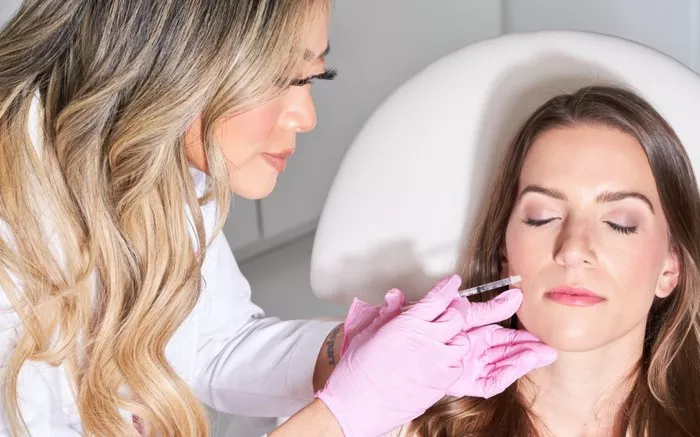Botox, a popular cosmetic treatment known for its wrinkle-reducing effects, has become a go-to solution for achieving a more youthful appearance. However, along with the benefits come potential side effects, such as bruising. Bruising after Botox injections is not uncommon, and it can leave individuals wondering about the duration of this temporary discoloration. In this article, we delve into the factors influencing bruising after Botox, the typical timeline for its resolution, and steps you can take to minimize its appearance and duration.
Understanding Bruising After Botox
Bruising is a common side effect of Botox injections and occurs when blood vessels under the skin are damaged during the injection process. While Botox is generally a safe procedure, the injection itself can cause some minor trauma to the surrounding tissue, leading to blood leaking from the damaged vessels. This blood pools beneath the skin, resulting in the characteristic discoloration known as bruising.
Factors Influencing Bruising
Several factors contribute to the likelihood and severity of bruising after Botox injections:
Injection Technique: The skill and experience of the practitioner administering the injections play a significant role in minimizing the risk of bruising. A skilled practitioner uses precise techniques to minimize trauma to the surrounding blood vessels.
Needle Size: The size of the needle used for injections can impact the risk of bruising. Smaller needles may cause less tissue trauma and reduce the chances of bruising.
Skin Sensitivity: Individuals with more delicate or sensitive skin may be more prone to bruising.
Medication and Supplements: Certain medications and supplements, such as blood thinners and aspirin, can increase the risk of bruising. It’s important to inform your practitioner of any medications or supplements you’re taking.
Vascular Structure: The location of the injection and the natural distribution of blood vessels in that area can influence the likelihood of bruising.
Typical Bruising Timeline
The timeline for bruising after Botox injections can vary from person to person and is influenced by the factors mentioned earlier. Generally, the bruising follows a predictable progression:
Immediate Aftermath: Bruising may not be immediately visible right after the injections. However, within a few hours to a day, you may start to notice the appearance of discoloration around the injection sites.
Peak Bruising: Bruising typically reaches its peak intensity around 2 to 3 days after the injections. The discoloration may appear darker during this period.
Subsiding: After the peak, the bruising gradually begins to subside. Over the course of 7 to 10 days, you may observe the color changing from dark purple or blue to green or yellow as the body metabolizes the trapped blood.
Complete Resolution: In most cases, bruising after Botox injections completely resolves within 1 to 2 weeks. However, the exact duration can vary based on individual healing processes and the severity of the bruising.
Minimizing and Managing Bruising
While bruising is a natural response to injections, there are steps you can take to minimize its appearance and duration:
Inform Your Practitioner: Before the procedure, inform your practitioner about any medications, supplements, or medical conditions that could increase the risk of bruising.
Cold Compress: Applying a cold compress to the injection sites immediately after the procedure can help constrict blood vessels and reduce the risk of bruising.
Arnica Gel: Arnica gel, a homeopathic remedy, can be applied topically to the bruised area to help reduce inflammation and promote healing.
Avoid Blood Thinners: If possible, avoid blood-thinning medications and supplements for a few days before the procedure to minimize the risk of bruising.
Gentle Care: Be gentle with the treated areas after the injections. Avoid vigorous rubbing or massaging, as this can exacerbate bruising.
Patience: Bruising is a temporary side effect that will gradually resolve on its own. Allow your body time to heal and the trapped blood to be reabsorbed.
Consultation with a Skilled Practitioner
To minimize the risk of bruising and ensure a positive Botox experience, consult with a skilled and experienced practitioner. They can provide personalized guidance based on your skin type, medical history, and aesthetic goals. Additionally, they can employ techniques to minimize tissue trauma during the injections.
Conclusion
Bruising after Botox injections, while a common side effect, is usually temporary and follows a predictable timeline. Factors such as injection technique, needle size, and individual skin sensitivity can influence the likelihood and severity of bruising. By understanding the typical bruising timeline and implementing preventative measures, such as informing your practitionerabout medications and supplements and applying cold compresses, you can minimize the appearance and duration of bruising. Remember that bruising is a natural part of the injection process and that it will gradually resolve on its own. If you’re concerned about bruising or its duration, consulting with a skilled practitioner can provide you with the guidance and reassurance you need for a successful Botox experience.

